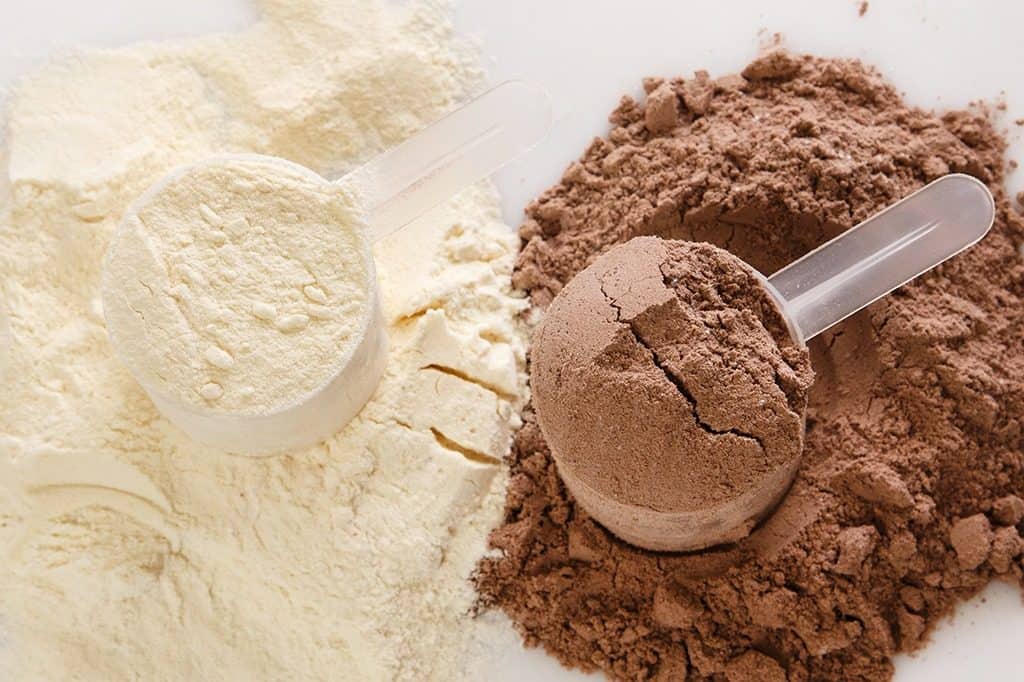
Protein is the king of supplements. Protein is one of the three macronutrients found in the food we eat; carbohydrates and fats are the other two. Protein powder and its effects have been researched exhaustively.
Whey Protein
If protein is the king of supplements, then whey is the king of protein powders. Whey is one of two proteins found in milk, the other being casein. Whey is superior to casein in many ways. It has a higher concentration of essential amino acids (essential because our bodies cannot make them, they must be obtained from food), in particular, the branched chain amino acids, which are vital for muscle protein synthesis (building new muscle). Additionally, it’s the fastest absorbing protein and elevates your blood amino acid levels, which leads to superior muscle protein synthesis. Finally, despite popular claims, whey protein provides greater satiety (feeling full) than casein.
Whey Protein Concentrate vs. Whey Protein Isolate
When doing your research on whey protein, you will find that there are two types of whey protein: whey protein concentrate and whey protein isolate. Whey protein concentrate (WPC) is the cheaper (and possibly better) form of whey. Minimally processed, WPC contains between 35% and 80% protein by weight. However, those sensitive to lactose may have gastrointestinal distress when consuming WPC.
Whey protein isolate (WPI) has been highly processed to contain 90% (or greater) protein by weight. This processing removes much of the β-lactoglobulin, which is the primary irritant in those with lactose intolerance. WPI may resolve sensitivity issues, depending on your degree of lactose intolerance. The potential negative, however, is that β-lactoglobulin is a significant source of the BCAA leucine, which is a major player in muscle protein synthesis.
When to Take
A commonly held belief is that protein should be taken post-workout. It certainly can be. However, some data indicate that taking it pre-workout (~30 minutes prior) may be better. In either case, the difference is probably negligible. I suggest drinking a whey protein shake 30 to 60 minutes prior to your workout. If this irritates your stomach or makes you gassy, then save it for post-workout.
Whey can also serve as a substitute for other animal protein sources such as chicken, beef, or fish. You can add a protein shake to your meals to help hit your macronutrient goals. In general, you should be eating a protein-rich meal 3-5 times a day, spaced 3-5 hours apart.
How Much to Take
As part of a normal healthy diet, you should be getting a significant portion of your protein from whole foods, particularly lean meats. A general rule of thumb for individuals following a strength training program is that you should consume 1 g of protein per pound of bodyweight per day. Obese individuals should not use bodyweight recommendations. Obese people should calculate protein targets off of their target bodyweight under the guidance of a dietician, nutritionist, or coach.
Protein Quantities in Common Foods
- Whey Protein (1 oz): 25 g
- Chicken Breast (4 oz): 35 g
- Pork Loin (4 oz): 31 g
- Sirloin Steak (4 oz): 31 g
References & Further Reading
- Barbell Medicine. (2014, February 26). 7 Rules to Optimize Protein Intake [Blog post].
- Examine.com. (n.d.). Whey Protein – Scientific Review on Usage, Dosage, Side Effects.
Disclaimer
The author of this guide is not a certified dietician or nutritionist and makes no claims to the contrary. Each individual’s dietary needs and restrictions are unique to the individual. Information is provided to the best of our ability. You are ultimately responsible for all decisions pertaining to your health.
This guide is written and produced for informational purposes only. Statements within this guide have not been evaluated or approved by the Food and Drug Administration. This guide is not designed to and does not provide medical advice, professional diagnosis, opinion, treatment or services to you or to any other individual. This guide is not intended to diagnose, treat, cure, or prevent any disease. The information provided in this guide, or through links to other resources, is not a substitute for medical or professional care, and you should not use the information without the advice of your physician or another healthcare provider.